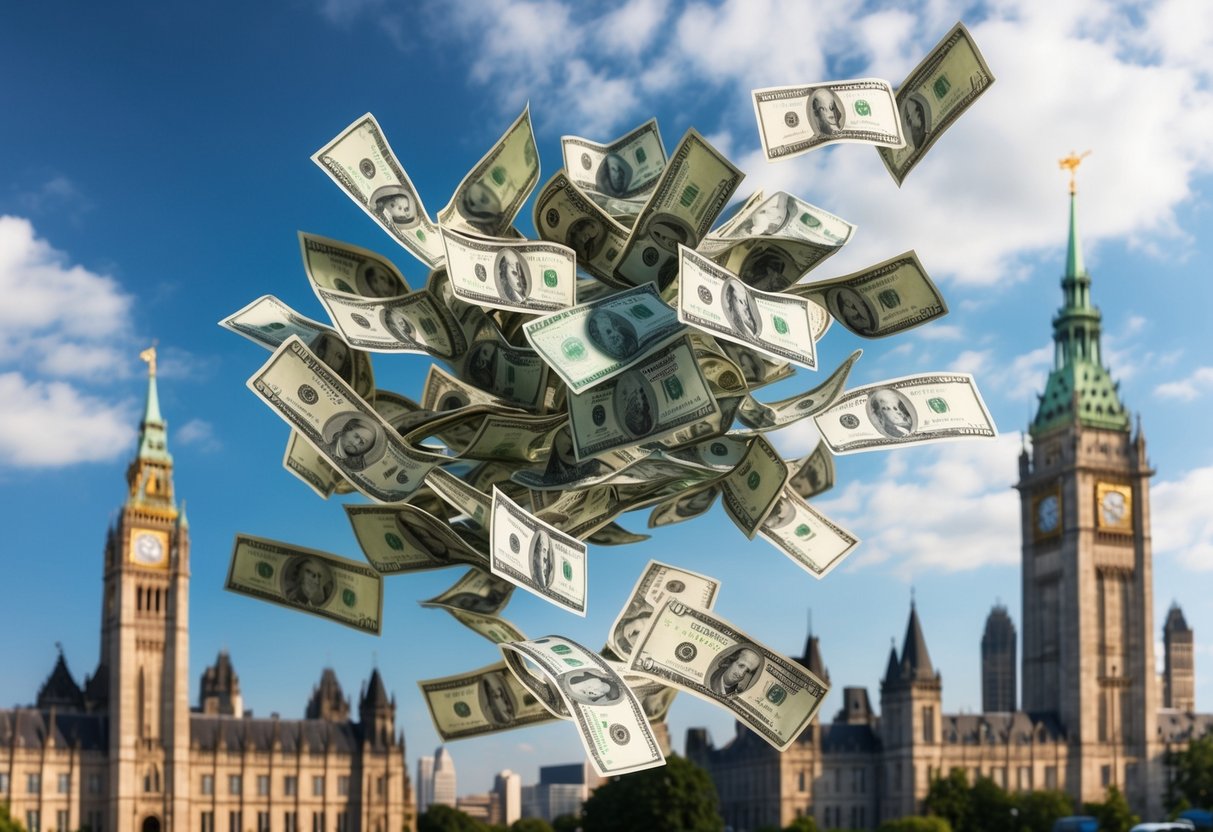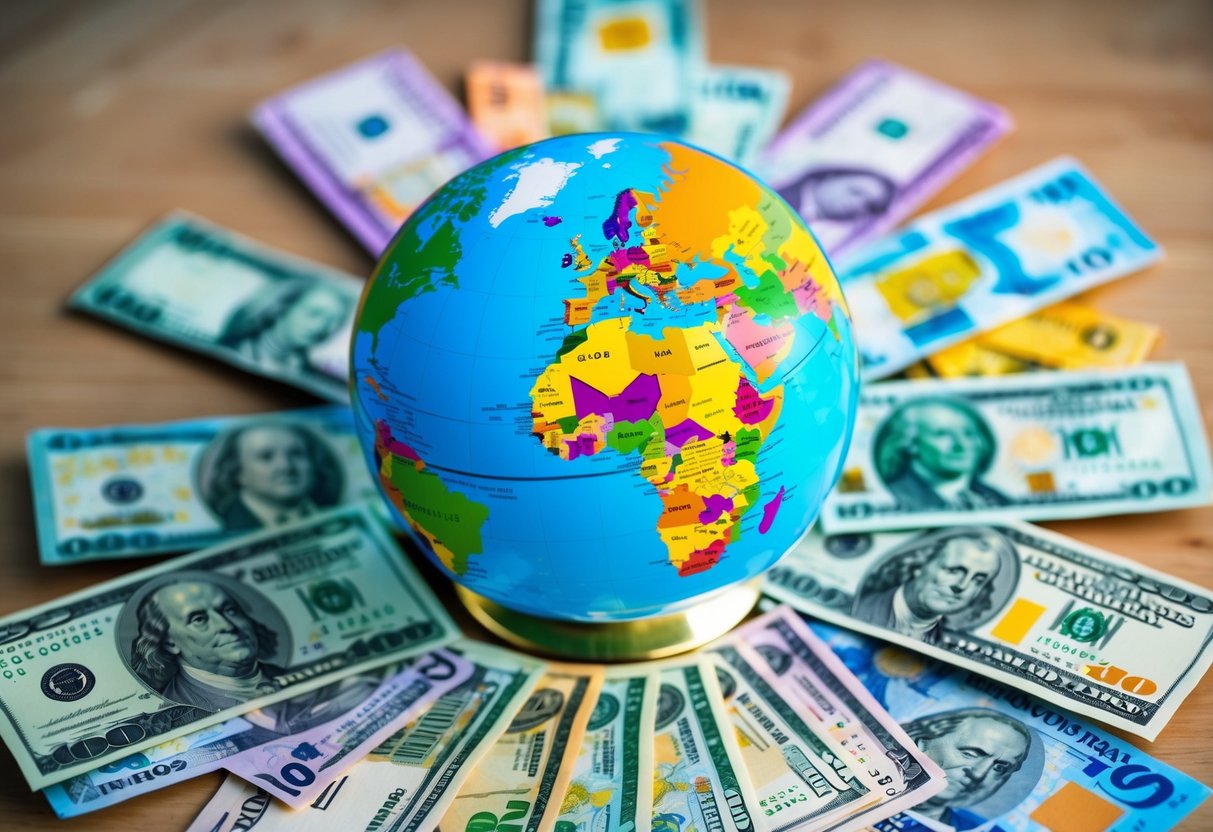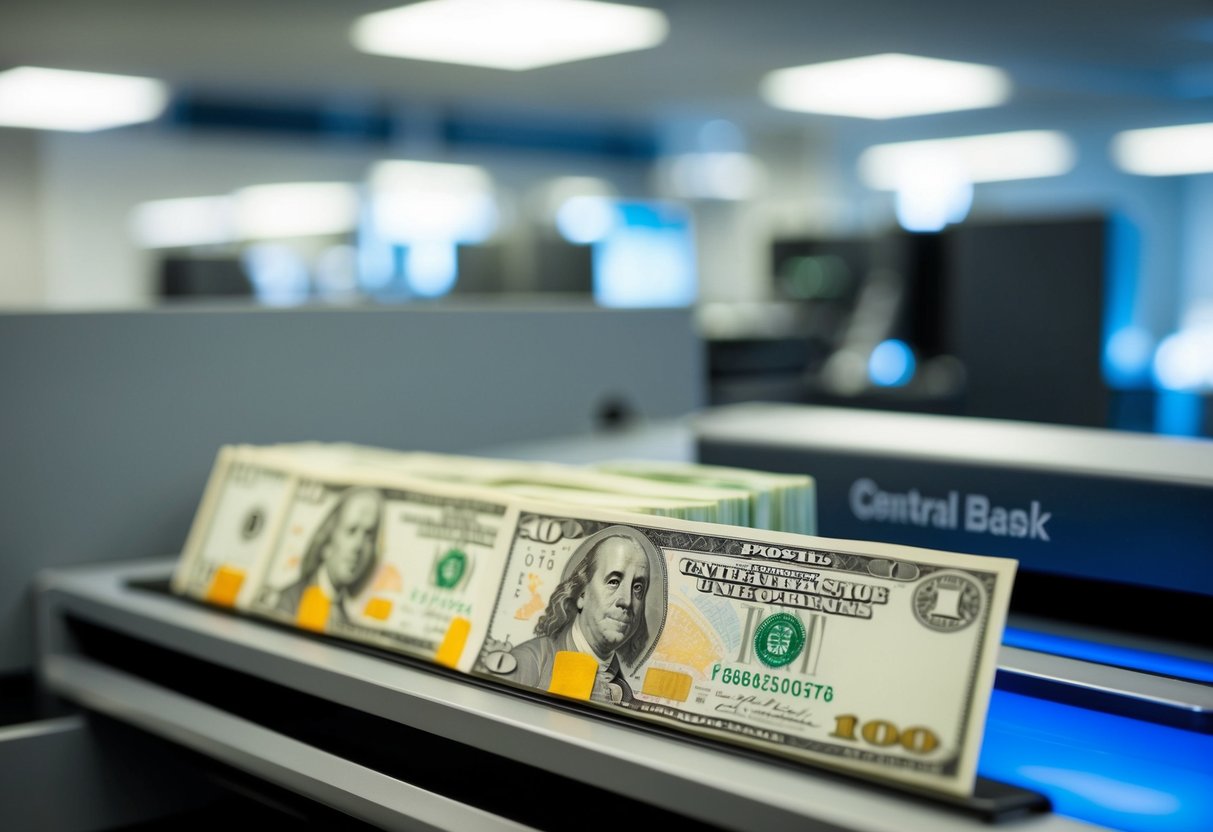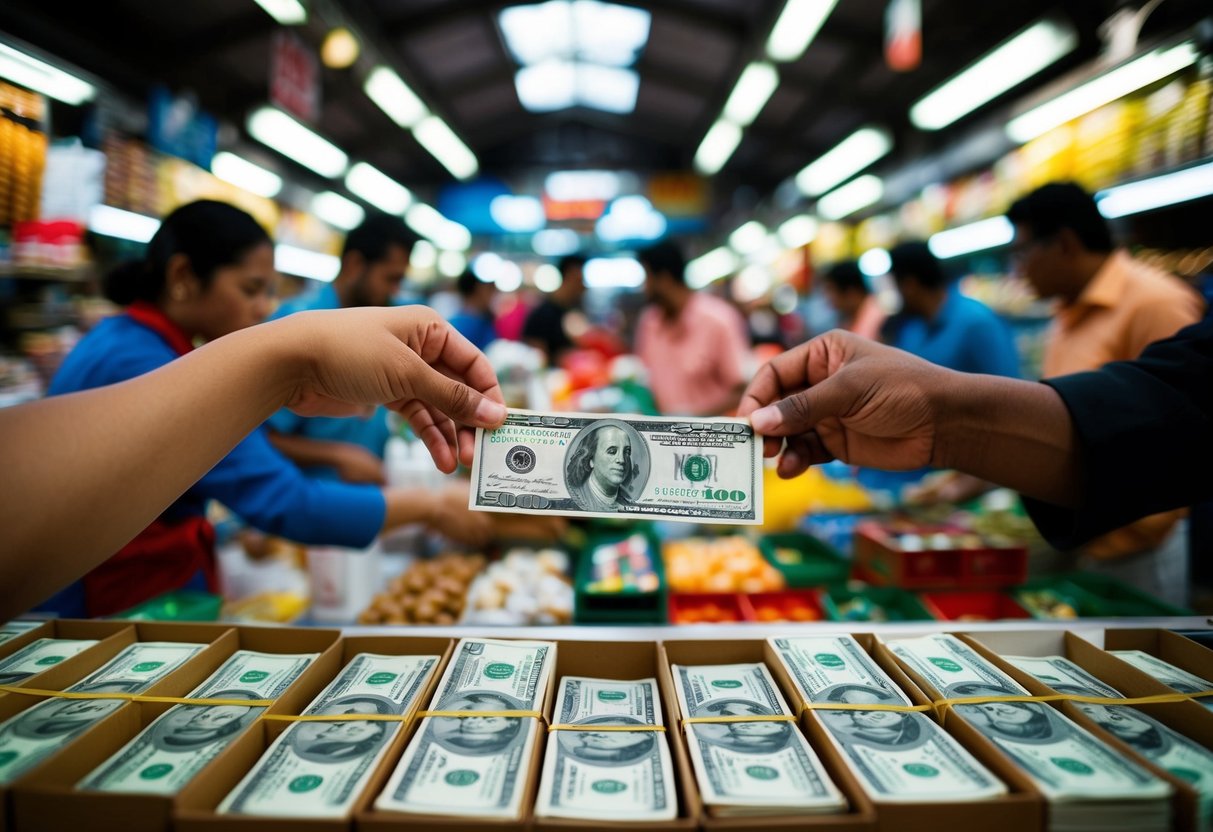
What Is a Fiat Currency?
Fiat currency is all around us, but many people don’t know exactly what it means. Unlike money backed by a physical item like gold or silver, fiat currency is issued by governments and doesn’t rely on a tangible asset. Fiat currency is valuable because the government maintains that value, and it’s recognized as legal tender. It is used daily in many countries, such as the U.S. dollar and the euro, making it a fundamental part of modern financial systems.
The government plays a crucial role in managing fiat currency, as it has the power to control the money supply and stabilize the economy. Central banks adjust interest rates and conduct other policies to influence economic conditions using fiat money. This type of currency is flexible and can respond to various economic challenges, which is particularly useful during financial crises.
Understanding fiat currency also requires a look at its role in investments and transactions. It allows for easier trade between countries, influencing global markets and international relations. As discussions about digital currencies grow, the future of traditional fiat money remains a compelling topic.
Key Takeaways
- Fiat currency is government-issued and not backed by physical commodities.
- Governments and central banks control fiat money and its value.
- Influences global markets and economic stability.
Defining Fiat Currency

Fiat currency is a government-issued form of money that is not backed by a physical commodity like gold or silver. It is valuable because it is established as legal tender by government decree and is widely accepted for transactions.
Historical Context
Fiat money has evolved over time. Initially, currency was tied to tangible assets, such as the gold standard, where each unit of currency could be exchanged for a specific amount of gold. This system aimed to give money inherent value based on precious metals.
In contrast, fiat currency has value because governments maintain it through regulation. The shift from commodity money to fiat largely occurred in the 20th century, especially after the end of the Bretton Woods system in 1975, with major currencies becoming fiat money. This marked the transition from paper money backed by commodities to money supported by governmental trust.
Legal and Economic Definition
Fiat currency, as defined, is money issued by a government. The value is not derived from physical commodities but from the decree of the government that issues it. This decree establishes it as legal tender within its jurisdiction, requiring it to be accepted for all debts, public and private.
The economic stability of a country plays a crucial role in the value of its fiat currency. Since fiat money is reliant on government regulation, the economy’s strength and the government’s credibility influence its purchasing power. Currency like the U.S. dollar serves as prime examples of fiat currency that holds significant economic influence globally. Unlike commodity money, fiat currency relies on the belief in its issuing government rather than an underlying physical asset.
Characteristics of Fiat Currencies

Fiat currencies have unique aspects that set them apart from other forms of money. These include a lack of intrinsic value, control by central governments, and the ability to be supplied in unlimited amounts.
Intrinsic Value and Backing
Fiat currencies lack intrinsic value. Unlike currencies backed by physical commodities, such as gold or silver, fiat money’s value is not tied to tangible assets. This means that fiat currency’s worth comes largely from the trust and confidence that people have in a government’s stability.
The backing for fiat money is the government itself. The currency is considered legal tender by law, requiring it to be accepted for transactions. This governmental backing ensures its acceptance in trade and commerce, despite lacking a physical commodity to support its value.
Governmental Control
Central banks play a crucial role in managing fiat currencies. They regulate the money supply and use monetary policies to keep economies stable. This is done through methods such as setting interest rates and controlling inflation.
Through these tools, governments can influence economic activity by either encouraging spending and investing or slowing it down. This control allows them to adapt economic strategies to meet changing financial situations and needs. The absence of a fixed backing gives them more flexibility to achieve these goals.
Unlimited Supply
Fiat currencies can be produced in unlimited amounts. Unlike commodity-backed currencies, which depend on the availability of physical resources, fiat money can be printed as needed. This allows governments to print more money in times of financial need or crisis.
However, printing too much money can lead to inflation, where the currency’s purchasing power diminishes. Balancing the money supply is key. It involves managing supply and demand dynamics carefully to maintain economic stability.
Global Fiat Currencies

Fiat currencies are essential in international trade and investment. They are backed by the economic power of their respective governments. This section examines significant global fiat currencies and their impact on the world economy.
The U.S. Dollar
The U.S. Dollar is the most widely used currency for global transactions. It serves as a reserve currency for many countries due to the United States’ economic stability and strength. The dollar’s influence extends to pricing commodities like oil and gold, which are typically denominated in dollars. This currency also plays a key role in facilitating trade and investment worldwide. The dominance of the U.S. Dollar ensures that it has substantial liquidity in foreign exchange markets, making it a preferred choice for international dealings.
The Euro and British Pound
The Euro, introduced by the European Union, is the second most traded currency. It is used by 19 of the 27 EU member countries, forming a significant part of the global economy. The Eurozone’s economic policies and stability directly influence its valuation and use.
Meanwhile, the British Pound continues to be a powerful currency due to the UK’s political and economic structure. Unlike the Euro, the pound is not tied to the broader European monetary system, allowing more flexibility. It remains a strong currency in global markets.
Other Notable Currencies
Japan’s Yen is another key currency in the global financial system. The country’s strong industrial base supports its currency, making it a safe-haven choice during economic turmoil. The Yen’s valuation often fluctuates with changes in Japan’s monetary policies.
China’s currency is gaining traction, reflecting the country’s growing economic influence. Efforts are being made by China to promote their currency in the global market, though it still faces challenges compared to the U.S. Dollar and Euro. Other currencies like the Swiss Franc are also recognized for their stability and reliability in international trade and finance.
Role of Central Banks

Central banks, like the Federal Reserve, play a pivotal role in the financial system. They manage how currency values, interest rates, and monetary policies affect the economy. Their actions help stabilize economic conditions and influence the flow of money.
Managing Currency Value
Central banks have the authority to manage the value of a country’s currency. This involves adjusting the money supply to keep inflation in check. By increasing or decreasing the amount of money in circulation, they can influence the value of currency compared to others. For example, the U.S. Federal Reserve uses tools such as buying government securities to inject more funds into the economy. This strategy can alter the dollar’s value in the international market. A stable currency value ensures predictability for businesses and consumers alike, aiding in long-term economic planning.
Interest Rate Decisions
Interest rates are one of the most direct tools that central banks use to influence economic activity. By lowering rates, they make borrowing cheaper, encouraging spending and investment. Conversely, raising interest rates can help cool down an overheated economy and control inflation. The Federal Reserve, for instance, frequently monitors economic indicators to decide whether to adjust rates. These rate adjustments are critical, as they impact everything from loans and mortgages to savings yields. Economies thrive when central banks carefully calibrate these interest rates based on current economic data.
Monetary Policy
Monetary policy encompasses the strategies that central banks use to regulate the economy’s money supply. These policies can be expansionary or contractionary. Expansionary policies aim to increase economic activity, often by lowering interest rates or purchasing assets. Contractionary policies, meanwhile, are designed to reduce inflation or stabilize a booming economy by raising rates or selling off assets. The Federal Reserve’s actions in this realm often have far-reaching implications for both domestic and global markets. By wielding monetary policy wisely, central banks strive to foster a balanced and sustainable economic environment.
Fiat Money vs. Other Forms of Money

Fiat money is distinct from other forms of currency due to its lack of intrinsic value, relying on government regulation to serve as legal tender. While commodity-based money holds value directly tied to a physical asset, cryptocurrencies operate on decentralized networks, influencing their value and functionality.
Commodity-Based Money
Commodity-based money is grounded in physical assets like gold and silver. These items have intrinsic value, meaning they are valuable in and of themselves, even outside financial systems. Historically, societies often used these precious metals as currency, as they were easy to store and broadly accepted.
The value of commodity money is directly linked to the physical asset’s market value, leading to stability when the asset remains in demand. However, it can also cause fluctuations if the asset’s value changes. For example, if gold prices rise, the value of gold-backed money increases. These shifts can positively or negatively impact economies depending on their reliance on these assets.
Cryptocurrencies
Cryptocurrencies like Bitcoin are digital currencies that operate on decentralized technology, often known as blockchain. Unlike fiat money, they are not issued by governments, nor do they depend on a physical commodity for value. Instead, their worth is determined by supply, demand, and the technological network they operate on.
These currencies offer unique features such as secure transactions and reduced need for intermediaries like banks. However, their volatility is notable; prices can swing significantly within short periods. Despite these risks, cryptocurrencies present new opportunities for financial innovation, attracting interest from both individuals and businesses looking for alternatives to traditional money systems.
Economic Implications of Fiat Currencies

The impact of fiat currencies on economies is profound, shaping factors like inflation, growth, and political stability. These currencies offer flexibility, but also bring challenges such as inflationary pressures and risks of hyperinflation in politically unstable regions.
Inflation and Deflation
Fiat currencies can lead to inflation because they are not backed by physical commodities like gold. Governments can print more money in times of need, increasing the money supply. This often results in inflation, as more money chases the same amount of goods.
Deflation, on the other hand, is less common but can happen when the money supply is restricted. Both inflation and deflation have significant impacts on purchasing power and economic activities. For instance, inflation erodes savings, while deflation can lead to reduced spending. Central banks use monetary policy to manage these issues, balancing between economic growth and price stability.
Economic Growth and Stability
Fiat currencies enable governments to manage their economies with greater flexibility. Central banks can adjust the money supply to stimulate growth or control inflation, adapting to current economic conditions. This control can lead to a more stable economy, as governments can respond more effectively to economic crises or downturns.
However, this same flexibility can sometimes lead to unsustainable growth if not managed carefully. Mismanagement could result in economic bubbles or financial crises. Proper oversight and regulation are essential to ensure that the benefits of fiat currencies are realized without leading to instability.
Hyperinflation and Political Factors
Hyperinflation is a severe risk associated with fiat currencies, particularly in politically unstable countries. When governments lose control over the money supply, prices can skyrocket. One of the most cited examples is Zimbabwe, where hyperinflation rendered the currency almost worthless.
Political instability often exacerbates financial mismanagement, leading to hyperinflation. The lack of trust in government policies can further undermine currency stability. Countries experiencing such conditions may struggle to regain economic stability, requiring international support and significant policy reforms to stabilize their economies.
Pros and Cons of Fiat Money

Fiat money, a common form of currency today, comes with its own set of benefits and drawbacks. Its flexibility and liquidity offer advantages, while risks like inflation and volatility present challenges.
Benefits of Fiat Currencies
Fiat currencies are highly valued for their flexibility and liquidity. Because they are not tied to physical commodities, governments can manage supply to address economic needs. This helps stabilize economies during financial downturns.
Another advantage is the ease of exchange. Fiat money is widely accepted worldwide, which aids in trade and commerce. This universality simplifies transactions and supports economic growth by facilitating seamless international trade.
Moreover, fiat currencies allow for centralized control over monetary supply. Central banks can implement monetary policies to manage inflation and interest rates more effectively. This can help keep economies stable and growing at a healthy pace.
Risks and Criticisms
Fiat money is not without its risks. One major concern is the potential for inflation. Increased money supply without corresponding economic growth can reduce purchasing power, leading to rising prices and living costs.
Another issue is volatility. While fiat currencies are stable compared to others, economic or political developments can cause fluctuations. This can disrupt markets and affect international trade stability.
Critics also point out the risk of mismanagement by governments. If monetary policies are poorly executed, it can lead to economic problems. For instance, poor control over currency supply can cause hyperinflation, severely damaging economies.
In summary, while fiat currencies offer valuable flexibility and convenience, they come with notable risks that require careful management to avoid economic pitfalls.
Legal and Regulatory Aspects

Fiat currency is an essential part of modern economies. This section covers the legal status of fiat money as legal tender and the regulatory frameworks that govern currency use, including taxation and rules set by central authorities.
Fiat Money as Legal Tender
Fiat money is recognized as legal tender in many countries. Legal tender means that the government mandates its acceptance for all debts and transactions. For example, the U.S. dollar is both fiat money and legal tender.
The stability and trust in fiat money often depend on the government’s authority. This trust is crucial during economic changes or emergencies, such as during the Emergency Banking Act of 1933, which reinforced the legal tender status of banknotes to restore confidence.
Regulation and Taxation
Fiat money is subject to various regulations and taxes. Central authorities, like a country’s central bank, regulate its issuance to control inflation and ensure economic stability. These measures help prevent inflation spikes and ensure adequate money supply.
Taxes on fiat currency transactions add to government revenue. Regulatory frameworks outline the tax obligations on income, sales, or other financial dealings. For example, capital gains taxes may apply to certain currency exchanges. Understanding these regulations helps individuals and businesses manage their financial responsibilities effectively.
Impact of Fiat Currency on Transactions and Investments

Fiat currency plays a crucial role in modern economies by facilitating transactions and shaping investment choices. Its influence on payment systems and investment decisions can be seen in various financial interactions.
Payment Systems
Fiat currency simplifies transactions by supporting a variety of payment systems. Unlike barter or commodity-based systems, fiat money allows for seamless exchanges without the need for an exact match of goods or services.
Credit cards and digital payment platforms rely heavily on fiat currency for processing payments quickly and efficiently. This convenience extends to both consumers and businesses, allowing them to engage in trade without physical cash.
Fiat currency’s role in these systems provides added security. Transactions are documented and traceable, reducing the risk of fraud. Additionally, fiat money supports the integration of IOU systems, where individuals and businesses can handle deferred payments and credit offerings.
Investment Decisions
Investments are significantly impacted by fiat currency. It provides a stable medium for investing in various assets, such as stocks, bonds, and real estate. Investors gauge the value of their investments based on the relative stability and fluctuation of fiat currency.
The ease of converting fiat money into different investment options encourages diverse financial portfolios. It impacts how investors perceive risk and manage their investment strategies. For example, when a fiat currency is stable, it suggests a healthier economy, potentially boosting investor confidence.
Moreover, when governments control the supply of money, they can influence interest rates and inflation, affecting investment returns. Therefore, the choice to invest in certain assets often hinges on economic indicators tied to fiat currency.
Future Trends in Fiat Currency

As the world advances technologically, fiat currency’s future is likely to be shaped by digital innovations and the evolving economic environment. Key areas like blockchain technology and the rise of cryptocurrencies are particularly influential. Meanwhile, central banks face both challenges and opportunities in this dynamic landscape.
Digital Innovations
Digital innovations have the potential to transform fiat currencies significantly. Blockchain, a decentralized technology, has enabled the rise of cryptocurrencies such as Bitcoin and Ethereum. These cryptocurrencies operate independently of any central authority, creating a new form of competition for traditional fiat currencies.
Stablecoins are another digital development to watch. Unlike many cryptocurrencies, stablecoins are designed to maintain a stable value by being pegged to a fiat currency or basket of currencies. This makes them attractive for various financial transactions, bridging the gap between traditional fiat currencies and the cryptocurrency world.
Centralized initiatives like Central Bank Digital Currencies (CBDCs) are being explored by several countries. These digital forms of fiat currency aim to improve transaction efficiency while maintaining government control over monetary policy.
Challenges and Opportunities
The future of fiat currency faces several challenges, but these also present opportunities. Inflation and fluctuating interest rates can erode public confidence in traditional fiat money. Some fear that if inflation persists, currencies like the U.S. dollar could lose their value.
Decentralized finance (DeFi) platforms offer new ways to engage in financial activities without relying on traditional banks. This could disrupt how fiat currencies are used, requiring adaptations by financial institutions to remain relevant.
Geopolitical shifts and regulatory developments will continue to shape the role and stability of fiat currencies. While these changes offer hurdles, they also provide a chance for innovation and adaptation in the ever-evolving financial landscape.
Frequently Asked Questions

Fiat currency plays a critical role in modern economies. Understanding its name, differences from digital currencies, and global examples helps clarify its function and importance.
Why is it called fiat money?
Fiat money derives its name from the Latin word “fiat,” meaning “let it be done.” This indicates that the currency has value because a government has declared it to be legal tender. The trust and confidence in that government give the currency its worth.
How does fiat currency differ from cryptocurrency?
Fiat currency is issued by a government and holds value based on public trust and government stability. Cryptocurrency, on the other hand, operates on decentralized technology without direct government backing. It often relies on blockchain technology for transactions and is subject to different regulations.
What is the purpose of using a fiat currency?
Fiat currency allows governments to maintain control over the economy by issuing and regulating money supply. This helps with managing inflation, implementing monetary policy, and providing a stable medium of exchange for citizens.
How did fiat currency become the standard in the US?
In the United States, the shift to fiat currency occurred when the country moved away from the gold standard. This transition was solidified in 1971 when President Nixon ended the direct convertibility of the U.S. dollar into gold, allowing more flexibility in monetary policy.
What are some examples of fiat currencies worldwide?
Around the world, common examples of fiat currencies include the U.S. dollar, the Euro, the Japanese yen, and the British pound. These currencies are trusted globally for trade and are not backed by physical commodities fiat currencies worldwide.
Is gold still used to back any modern currency?
Currently, gold is not used as the standard backing for any modern major currencies. Most countries use a fiat currency system, where the value is not tethered to gold reserves. This shift allows for greater control over economic policies and flexibility in responding to financial crises.


